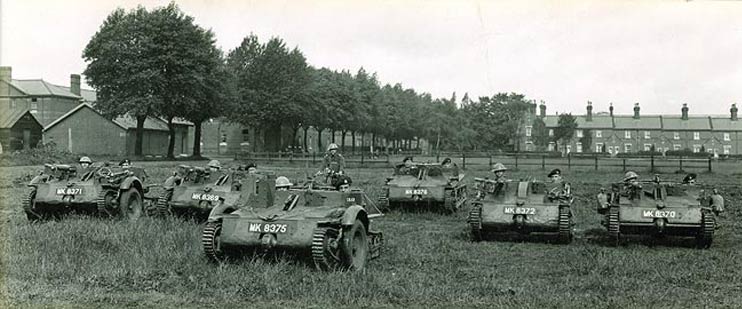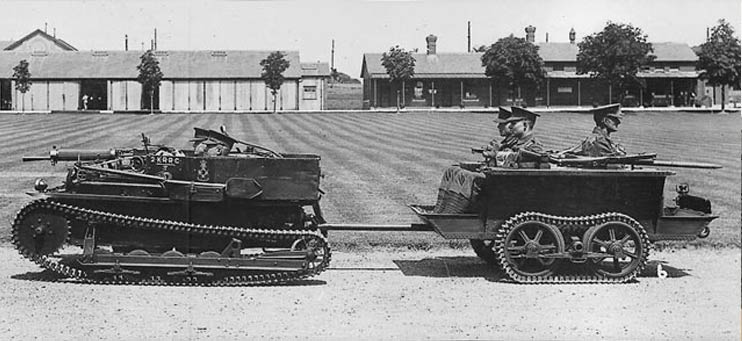This interesting but, to the modern eye rather quaint, photograph shows members of the Machine-Gun Company in 2nd Battalion, The King’s Royal Rifle Corps (2 KRRC), mounted in Carden-Loyd carriers at Aldershot in June 1928.

Each carrier has a crew of two: a member of the Battalion wearing a steel helmet behind his machine gun and a driver from the Royal Tank Corps wearing a beret.
Background
In January 1925, 2 KRRC ceased to form a part of the Army of Occupation in the Rhineland and moved to Aldershot, where the Battalion was chosen, from 1 April 1926, to carry out trials as the first mechanised battalion in the British Army. To quote from the 1931 KRRC Chronicle:
“The Battalion was still organised in a similar manner to other infantry battalions on home service, namely, four rifle companies and a machine-gun platoon of 8 guns in the HQ wing. Early in 1927 a third section was added to the MG platoon, making 12 guns in all. On March 1st, 1928, the new infantry battalion organisation came into force, by which the fourth rifle company was abolished, and the MG platoon was formed into a MG company distinct from the HQ wing. At the same time the MG company was considered to contain four sections of 4 guns each when on war strength. … Soon after the change the first experimental MG company with Carden-Loyds was formed in the Battalion, although at the time these machines were driven [on attachment] by personnel of the Royal Tank Corps. The rest of the transport was driven by men of the Battalion.”

In 1929 the Battalion moved to Tidworth where the MG Company received its own Carden-Loyds driven by members of the Battalion. In the same year a mechanised anti-tank platoon was formed in HQ wing. The platoon consisted of two sections, each with two 0.5 inch Vickers anti-tank machine guns, carried in Carden-Loyds with trailers for the gun crew. In 1931 a mechanised mortar platoon of two sections carried in Carden-Loyds, each with two 3-inch Stokes mortars, was added.
The Battalion’s first experience with mechanisation ended in June 1932 when it moved to Belfast.
